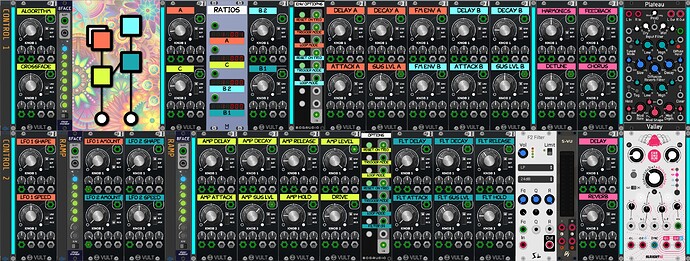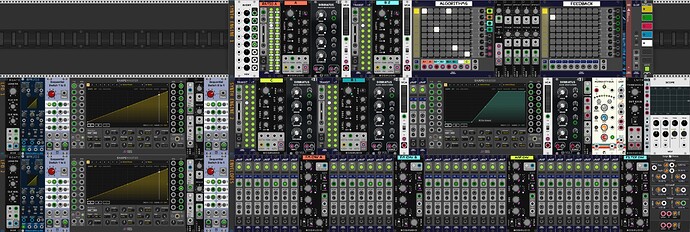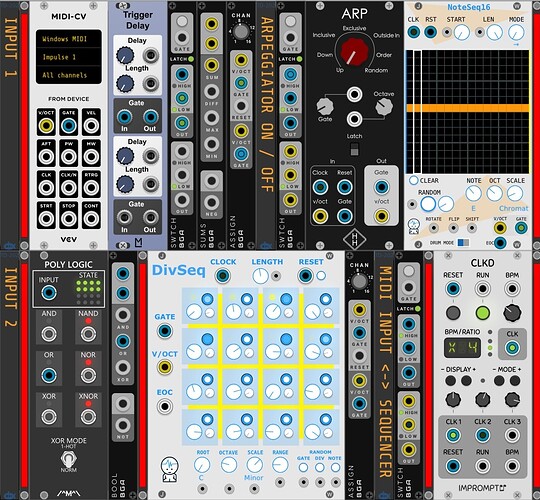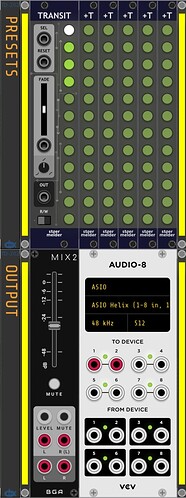FM Synth in the style of the Elektron Digitone™ Synth Engine
I love FM, but I do not understand it…
I was researching Hardware-FM-Synths, because I would like to start my outboard equipment journey and I found the small elektron model:cycles, which I thought was quite a powerful “toy” - then I decided to have a look at the elektron digitone. I watched all tutorials and walk-throughs from loopop, cuckoo, red means recording, etc… After that I read the manual, because you do that before a purchase, right?
And while reading I thought, maybe I should build the engine in VCV to understand it.
So I did that - to the extent, that all eight algorithms, the envelopes, the modulation, the filter and even the polyphony, LFOs, Arpeggiator and the effects are nearly identical - the sound is obiously different, but the engine is working great so far.
I built the engine core first, but you don’t have to touch it, everything is controlled via the control section (image above). 2 LFOs, which are synced to a master clock, 4 FM-OPs with 24 preset ratios each arranged in 8 Algorithms with 2 FM-Envelopes with a very unique assignment. Feedback, Wave-Folding (Harmonics), Filter and Amp, everythings with true 8 voice polyphony. The stereo summming is in front of the effect section with chorus, delay and reverb.
The Input Section has the ability to switch between external Midi with a switchable arpeggiator (modelled like the original one, the note seq can shift individual steps and gates) or a sequencer (I chose the DivSeq here, I find it very musical, but you can exchange it for whatever). The arpeggiator and the sequencer are rotating around in the 8 polyphony channels, so each note can fade out. The clock is for triggering the arpeggiator, the sequencer and the delay- and LFO-times.
Finally there is a master section, with a master fader and a preset selector. The first four presets are set, with the first patch being the “Init”-Patch. Most of the controls of the control section are mapped in the preset selector.
All modules are free.
The patch:
FM Synth.vcv (423.2 KB)
If you want to set the algorithm images in the control section (which I absolutely recommend!) download the following images (made by myself, background → pixabay.com, illustration → photoshop) and put them in a permanent location. Then set the 8face on the left of the image panel to R/W-Mode. Load image 1 into the panel, press the first button on the 8 face, load image 2, press the second button and so on.
I hope everything works for you, and you’re having fun creating awesome noise!
If there are any questions, please feel free to ask. (And reading the Digitone Manual will help a lot!)
- mo












